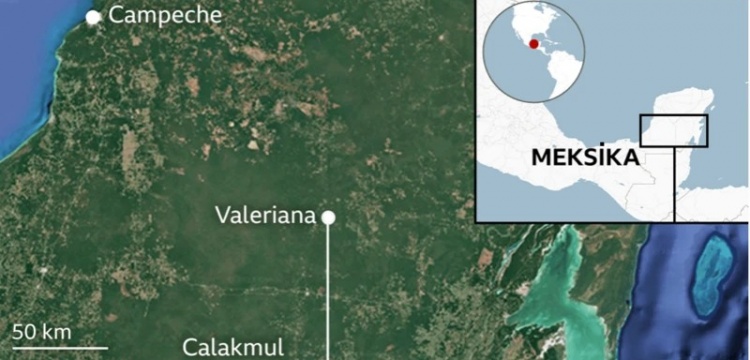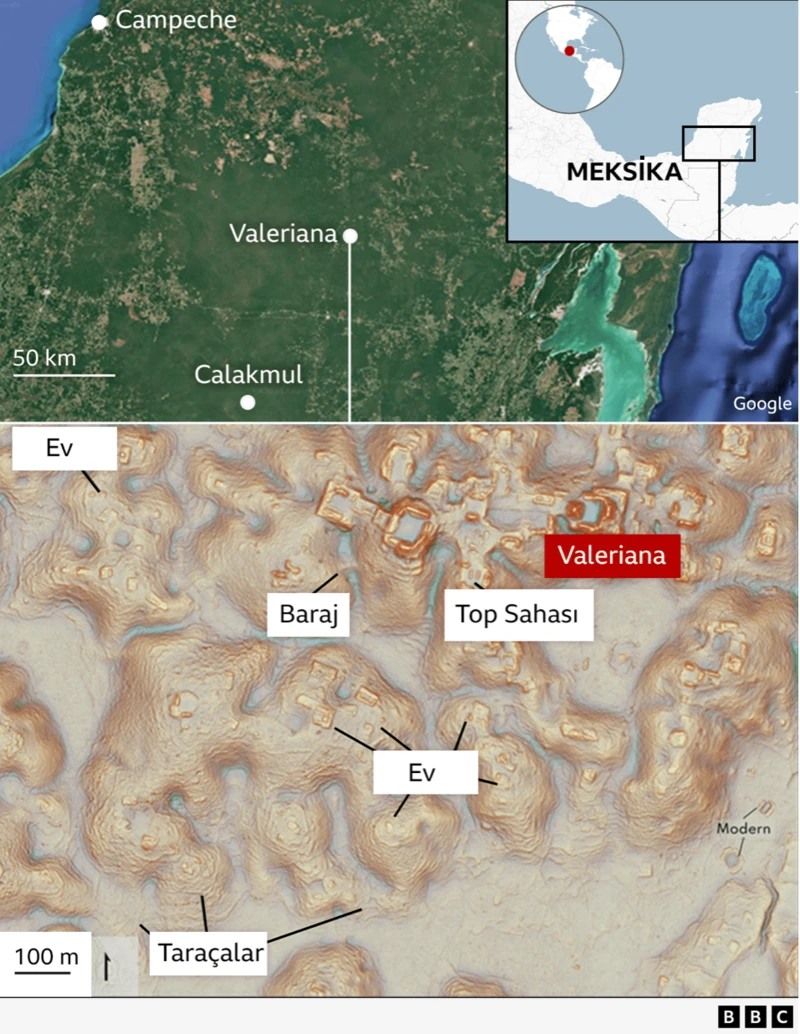A lost Mayan city and pyramids has been discovered Mexican jungle

The city, which has been named Valeriana by archaeologists, was found by studying laser scans that had been taken in 2013 as part of a forest monitoring project in the southeastern state of Campeche.
A lost Mayan city, complete with pyramids and a ball court, has been discovered buried deep under the Mexican jungle.
Archaeologists found pyramids, sports fields, causeways connecting districts and amphitheatres in the southeastern state of Campeche.
They uncovered the hidden complex - which they have called Valeriana - using Lidar, a type of laser survey that maps structures buried under vegetation.
They believe it is second in density only to Calakmul, thought to be the largest Maya site in ancient Latin America.
The team discovered three sites in total, in a survey area the size of Scotland's capital Edinburgh, “by accident” when one archaeologist browsed data on the internet.

000“I was on something like page 16 of Google search and found a laser survey done by a Mexican organisation for environmental monitoring,” explains Luke Auld-Thomas, a PhD student at Tulane university in the US.
The city, discovered in a recent study, likely home to 30,000-50,000 people around 750-850 CE, spans an area comparable to Edinburgh, the Scottish capital.
Using Light Detection and Ranging (LiDAR) technology, researchers detected structures obscured by dense vegetation in Campeche, southwest Mexico, revealing agricultural fields, sports courts, an amphitheater, and pyramids.
While the reasons for Valeriana’s decline over a millennium ago remain unclear, climate change is suspected as a possible cause.
The new findings were published in Antiquity, a peer-reviewed journal on archaeology, shedding light on the Mayan civilization, which thrived across southeastern Mexico and Central America with significant advances in astronomy, mathematics, and architectur
